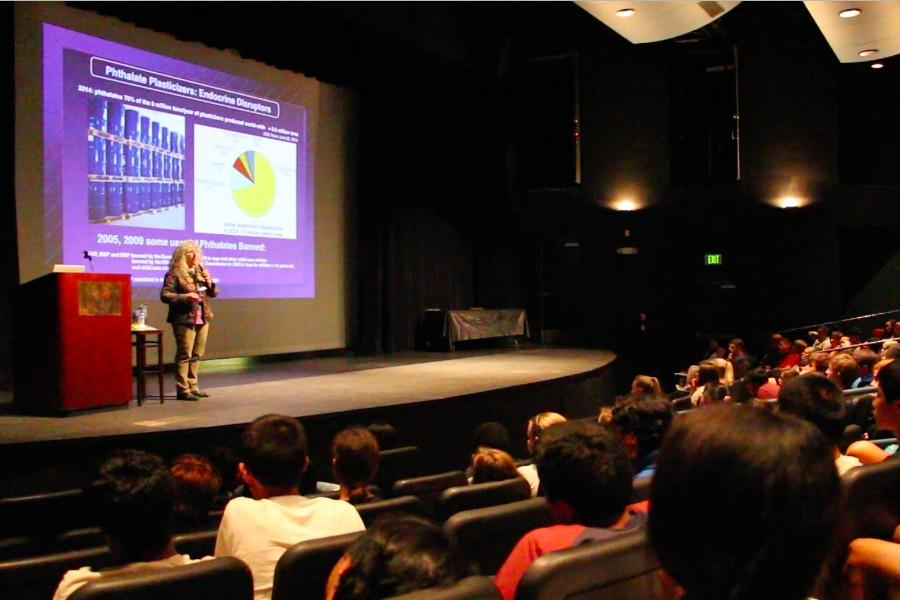STEM Committee organizes talks for students
From Monday, October 19 to Wednesday, October 21, the school hosted STEM week, an annual tradition in which speakers from science, technology, engineering and math fields educate the school about various topics involving their work.
This year, STEM week had a variety of speakers, including Andrew Fraknoi, an award winning astronomy professor; Stanley Yang, chief executive officer of NeuroSky, a company which makes biosensors that retrieve personal information about the body; and Deborah Magid, IBM’s director of software strategy involved in the invention of Watson, the first computer to defeat top Jeopardy players.
“It [was] diverse this year, so students can see how science impacts their lives in various ways, and you can see topics you wouldn’t [normally] think about,” publicity chair of the STEM Committee Uma Panda said.
The STEM Week Committee is a group of people who organizes STEM related events inside and outside of school hours. Prior to the event, the committee worked 40 hours a week for several weeks to find informative and engaging yet entertaining speakers.
The volunteer coordinator found escorts and ushers and ensured speakers’ audio and video requirements for the theater, while speaker coordinators worked directly with speakers and recruited people who had a sufficient STEM background.
Another committee member managed the speaker lunch gathering in which all the speakers had the opportunity to meet with each other, and the publicity team worked with The Talon and ASB to promote STEM Week on the daily morning announcements.
“We work… with everybody so people will know about the [speaker] events and understand what [they are] about and come to participate in various things,” committee member Irina Zaks said.
The teacher liaison, Danielle Paige, was in charge of coordinating with teachers and sending out faculty sign up sheets for teachers to decide what presentations they wanted to attend with their students.
Committee members actively look for ideal STEM speakers to feature, interesting people who appeal to the students.
“I’d like to say that we have this equation [for recruiting speakers] but it’s not like that at all. It’s very organic,” Panda said. “I know a couple of people on the committee who actively go to… different presentations just to look for speakers.”
The arrival of new members also provides fresh insight and opportunities for improvement to the STEM Committee.
“The first year that I came on, I was the only one that stayed [after that],” Panda said. “But then it changed again the next year, so each year has been kind of different. We find different skill sets.”
The committee plans toextend its reach beyond pure science and math to incorporate more art and psychology into the curriculum. The goal of the committee is to create a broader spectrum of appeal for a larger audience.
“What better way [is there] to help others… become more familiar and comfortable with STEM than to keep promoting it?” Panda said.




